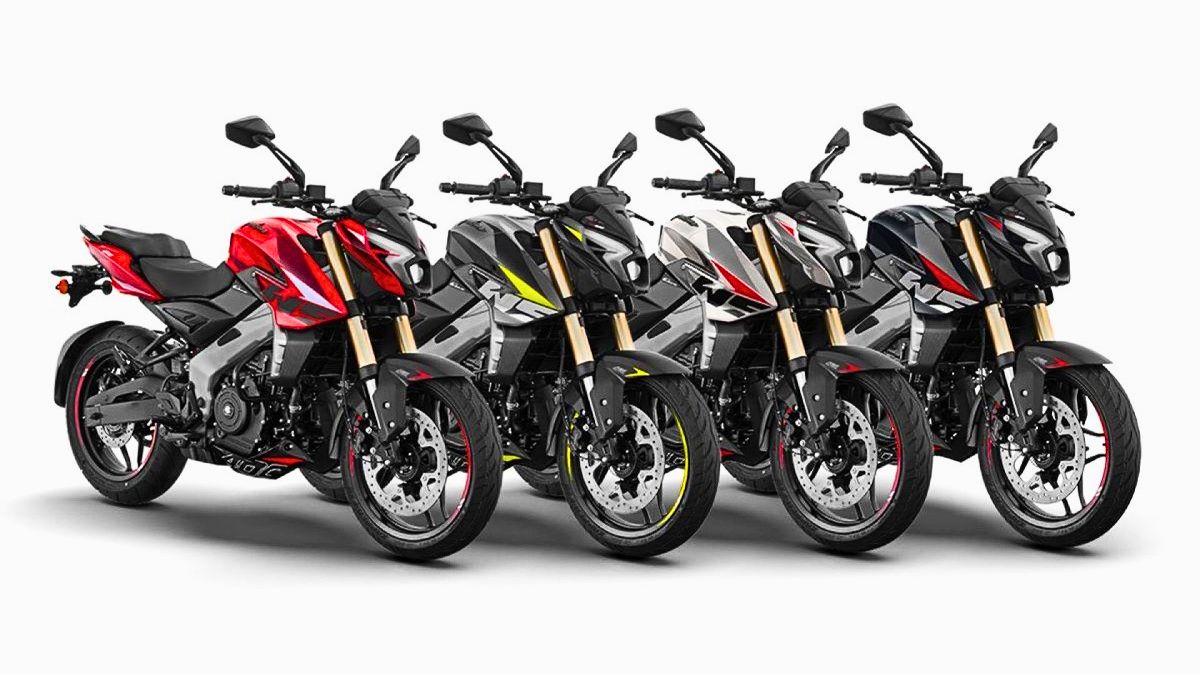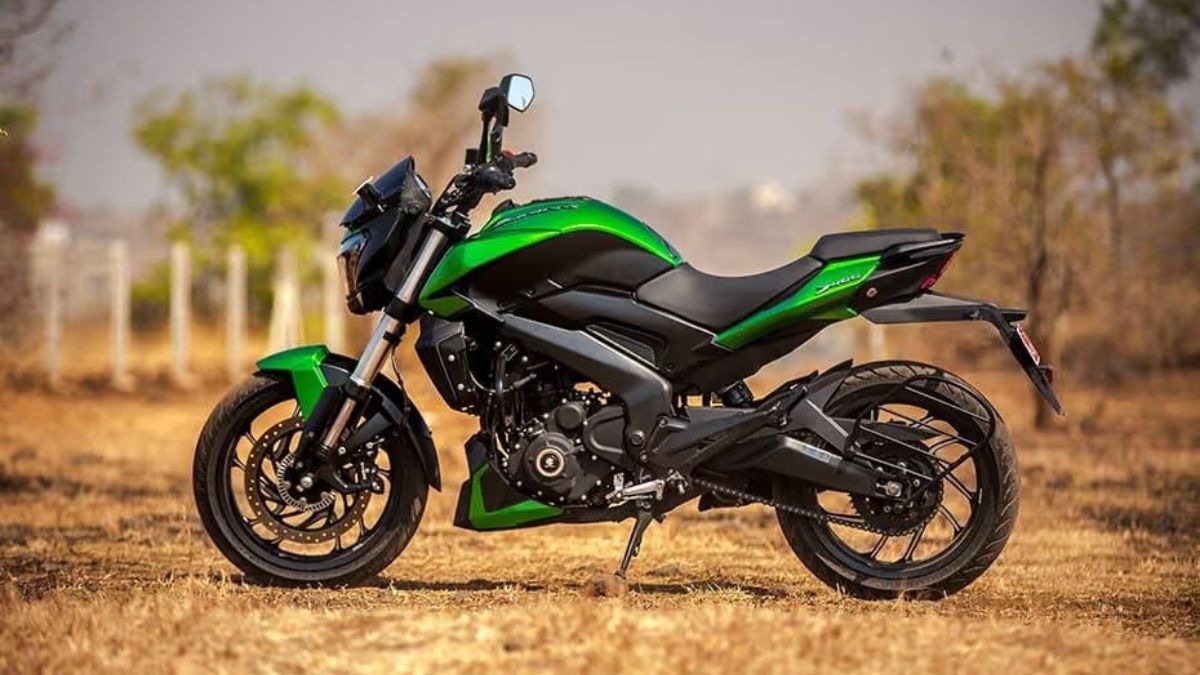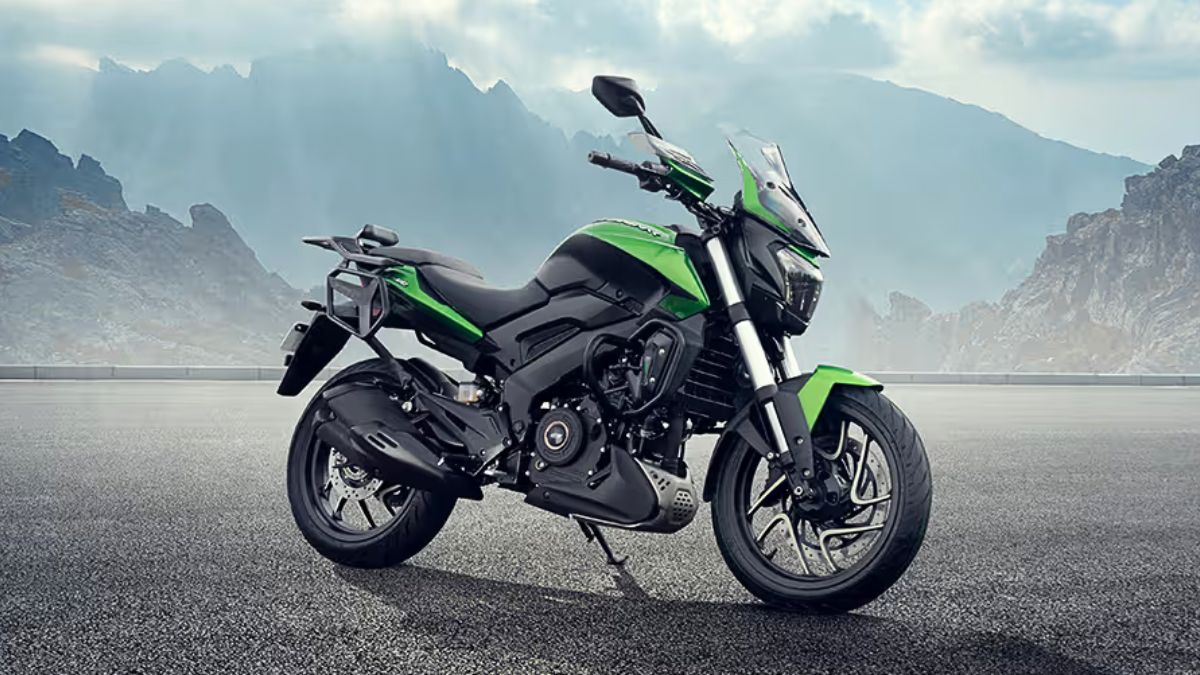The 2025 Bajaj Pulsar NS400Z is gearing up for its official launch in India, and it looks like the bike has already started arriving at dealerships. A recent video making rounds online shows the new model in the flesh, and while the changes aren’t radical, they’re definitely worth noting for fans and potential buyers. From better tyres to improved braking and updated emission compliance, here’s everything you need to know.
Tyres
One of the most visible upgrades on the 2025 Pulsar NS400Z is the switch to 150-section Apollo Alpha H1 radial tyres at the rear. The outgoing version used 140-section MRF REVZ tyres. So, what does this mean for riders? The wider profile and grippier rubber of the Apollo tyres should offer better stability, especially when leaning into corners or pushing hard in a straight line.
The front tyre has also been swapped for Apollo rubber, although the size remains unchanged. Overall, this tyre change suggests Bajaj is aiming to enhance the bike’s handling dynamics without making major mechanical revisions.
Brakes
Another subtle but significant upgrade is in the braking department. The 2025 Pulsar NS400Z ditches its organic brake pads in favour of sintered pads. These are known for offering better heat resistance and consistent stopping power, particularly useful for high-performance or aggressive riding scenarios. This upgrade, while minor on the surface, could improve real-world braking feel and inspire more confidence during sudden stops.
Emissions
As with most recent two-wheeler updates, Bajaj has made the NS400Z compliant with the latest OBD-2B emission norms. This update ensures the bike is future-ready in terms of emission standards, though it doesn’t bring any change to performance figures. The engine continues to deliver 39.4bhp and 35Nm of torque, making it one of the most powerful bikes in its price bracket.
Features
The NS400Z retains all the goodies from the previous version. That includes full LED lighting all around, a feature-rich digital console, and switchable traction control. You also get four ride modes — Road, Rain, Sport, and Off-road — allowing riders to tweak the bike’s performance depending on conditions or mood. These features make it not just fast, but also versatile.
Price
The 2025 Pulsar NS400Z is expected to cost around Rs. 7,000 to Rs. 8,000 more than the current version. The outgoing model is priced at Rs. 1,81,318 (ex-showroom), so the new version could land somewhere around Rs. 1.88 lakh to Rs. 1.89 lakh.
Here’s a quick summary:
| Feature | 2024 NS400Z | 2025 NS400Z Upgrade |
|---|---|---|
| Rear Tyre | 140-section MRF | 150-section Apollo Alpha |
| Front Tyre | MRF REVZ | Apollo (same size) |
| Brake Pads | Organic | Sintered |
| Emission Norm | Pre-OBD-2B | OBD-2B Compliant |
| Expected Price | Rs. 1,81,318 | Rs. 1,88,000 approx. |
With these upgrades, Bajaj is clearly fine-tuning the NS400Z for a better riding experience without changing its core identity. It still delivers great value and performance but now with better grip, enhanced braking, and updated emissions compliance. Keep an eye on local dealerships — chances are, it’s already parked there waiting for you.
FAQs
What tyre is used on 2025 NS400Z?
It now uses 150-section Apollo Alpha H1 at the rear.
Has braking been improved?
Yes, it now comes with sintered brake pads for better performance.
Is the engine performance changed?
No, it still makes 39.4bhp and 35Nm torque.
What is the expected price?
Around Rs. 1.88 to 1.89 lakh ex-showroom.
Does it have ride modes?
Yes, it offers Road, Rain, Sport, and Off-road modes.






